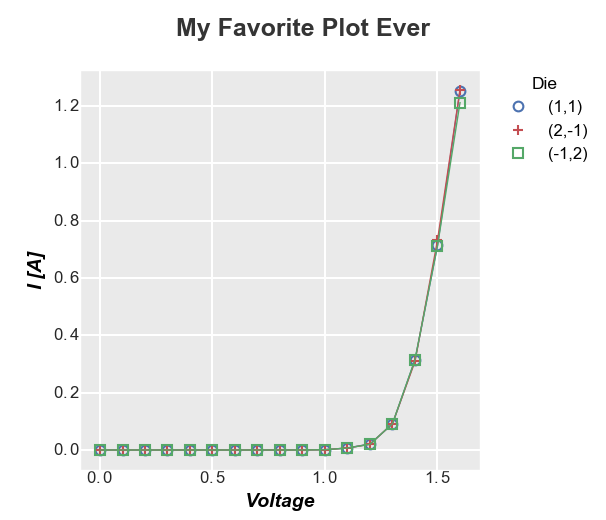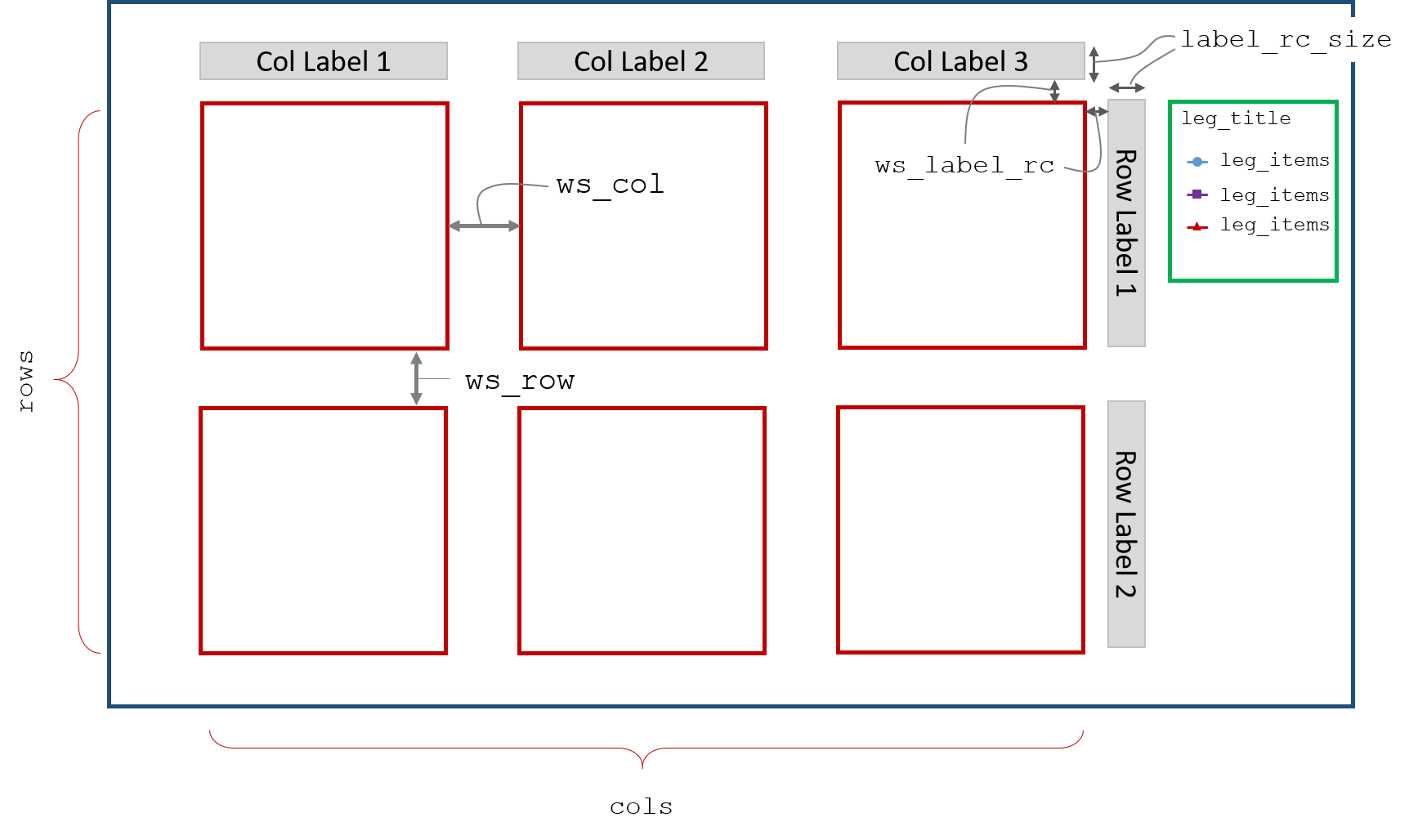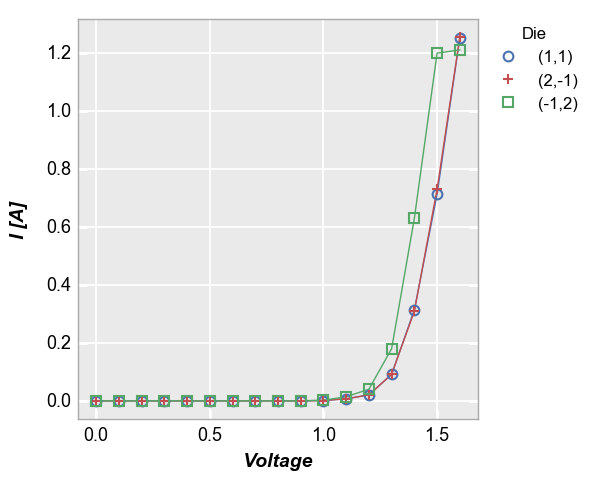Layout¶
All plots consist of a number of different “elements” arranged in a specific
spatial “layout”. In fivecentplots, each plot component (such as the
axes window, labels, legends, etc.) is defined as an
Element class (or object) that contains all of the attributes that define
its style (i.e., color, font, size, etc). The placement of these Element
objects is handled by a Layout class. Element objects are spaced
by either a user-defined or default whitespace. The specifics
of the Layout class depend on the python plotting engine being used.
Currently, only matplotlib is available as a plotting engine, but additional
engines will be added in the future.
An example x-y plot and a schematic blueprint of its underlying layout
is shown below. All Element attributes
and whitespace parameters can be controlled via keyword arguments in the plot
function call or from a predifined “theme” file that consists of dictionaries
of preferred values.
Example Plot:

Layout Schematic:

We can extend the simple single-axis plot and make a grid of subplots.
An example of the featured Element objects in this case is shown below:
Layout Schematic with Grid:

All keyword arguments for Element attributes and whitespace are defined
in the next section of the guide.
Engine¶
In order to actually create a plot, fivecentplots must tap into a plotting “engine”. This engine is a standard Python plotting package like matplotlib or bokeh. One of the key advantages of fivecentplots is the ability to switch between plotting engines while using the same keyword-argument-based api. The engine itself is toggled by a keyword. fivecentplots uses matplotlib as its default engine.
For example, if you needed a high-quality plot for a paper and wanted to use matplotlib, you could do the following:
fcp.plot(df, x='Voltage', y='I [A]', legend='Die',
filter='Substrate=="Si" & Target Wavelength==450 & Boost Level==0.2 & Temperature [C]==25')

Alternatively, what if you needed to interactively manipulate the same data set? It may be more
convenient to plot via bokeh. To switch engines, we simply add the keyword engine and
set to “bokeh”:
fcp.plot(df, x='Voltage', y='I [A]', legend='Die', engine='bokeh',
filter='Substrate=="Si" & Target Wavelength==450 & Boost Level==0.2 & Temperature [C]==25')

Note
As of version 0.3.0, bokeh support is limited compared with matplotlib. More development is needed.